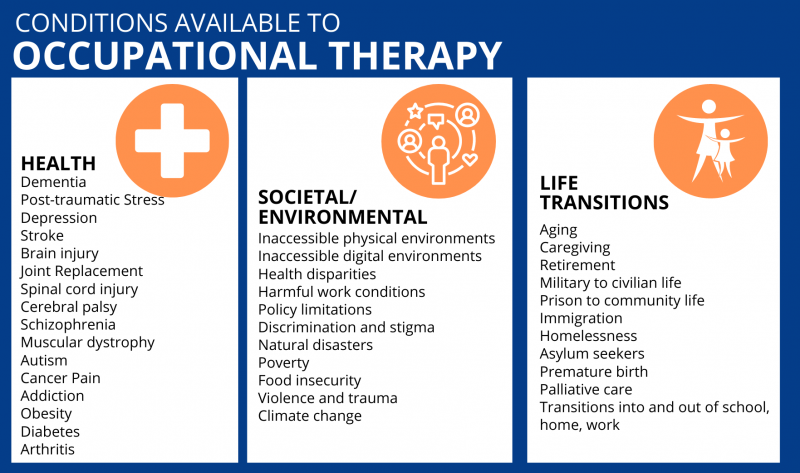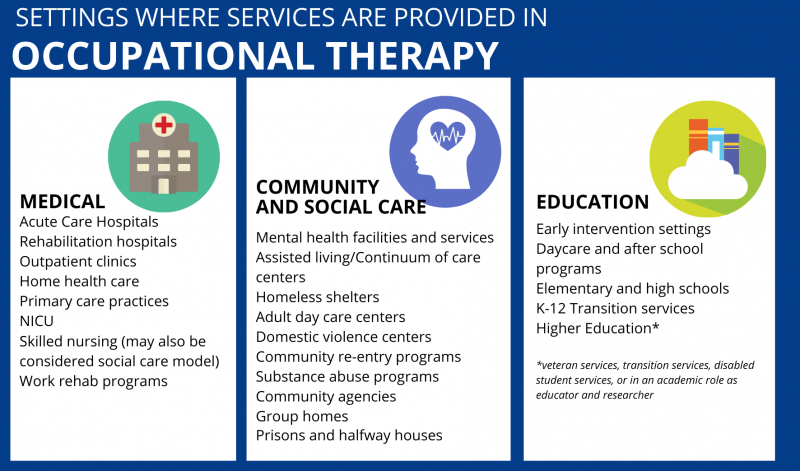
Occupational therapy enhances the ability of individuals, communities, and populations to access and engage in the activities they need, want, and are expected to do every day—whether for survival or for flourishing.
When the field of occupational therapy was founded in the late 19th century, the term "occupation" referred to any activity that occupied one's time. The profession’s name was fitting for its time, long before "occupation" became synonymous with job, career, or work. In early asylums, where occupational therapy was first practiced, staff found that patients improved when they were engaged in meaningful activities. They thrived when they were occupied. The profession’s founders adopted the term "occupational therapy," meaning therapy through meaningful occupation.
In modern-day occupational therapy, the activities people engage in are still referred to as occupations. Examples include obtaining food; preparing, eating, and sharing meals; personal hygiene; dressing; taking care of others; engaging in work or education; socializing; participating in recreation or hobbies; meditating; engaging in religious practices; volunteering; and sleeping.
Through these occupations, individuals meet basic survival needs, develop their capacities, connect with others, express their identities, contribute to their families and communities, and shape the world in physical, social, cultural, and political ways. In other words, the occupations people engage in are fundamental to individual and societal health, well-being, and growth. When these daily activities are disrupted or unavailable, even temporarily, people are cut off from a key source of health and flourishing, often leading to poor health and a diminished quality of life.
Therefore, meaningful engagement in occupation is a fundamental human need and right. It is also the cornerstone of health, which occupational therapists work to restore and promote.

Who Receives Occupational Therapy?
Occupational therapists work with individuals of all ages, families, communities, and populations to address situations that limit their ability to access and engage in essential and meaningful occupations. The graphic below highlights various conditions that occupation participation in everyday activities. Occupational therapy can significantly benefit individuals navigating these conditions and life transitions.


Where Are Occupational Therapists Employed?
Given the varied populations occupational therapists serve, they work in various settings. The graphic below showcases examples of these settings. Occupational therapists collaborate closely with clients in these environments, acting in multiple roles such as direct care providers, consultants, administrators, entrepreneurs, educators, program developers and evaluators, and policy consultants. Occupational therapists also work alongside a wide array of interprofessional team members, including physicians, physical therapists, speech therapists, nurses, social workers, teachers, psychologists, and psychiatrists, as well as professionals in fields like entrepreneurship, design (clothing, interior, architecture), engineering, and city planning.
